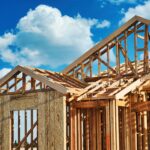There is a severe housing shortage as a result of record-high home prices and rents in addition to record-low for-sale inventories and vacancies, according to a new analysis from the Joint Center for Housing Studies.
Research showed that the vast majority of specialists agree that the country’s affordability issues stem from this shortfall.
Their methods can be used to determine why these estimations differ from one another. The lowest estimate on the list, 1.5 million units, comes from the research from the National Association of Home Builders (NAHB).
They found the difference between the total number of unoccupied units for sale or rent that is currently available and the total that would exist under “normal” vacancy rates for each metro area in the nation, which is defined as the long-term average rates.
It’s believed that the NAHB estimate represents a total of all U.S. metropolitan areas should help to partially clarify its lower value. The other two estimates, in contrast to the NAHB number, also include non-metro areas. In addition, NAHB’s approach is different, as it only includes unoccupied properties that are for sale or rent; vacant properties that are seasonal or second homes are not included in the shortage calculation.
Similar to the NAHB forecast, Freddie Mac’s projection of a 3.8 million unit deficit is contingent on how much lower than “normal” the present vacancy rate is. There are still some significant variations between the two computations. The entire nation is included in Freddie Mac’s estimation, not simply major cities. In contrast to NAHB, Freddie Mac’s estimate accounts for an extra 0.4 million units for “missing” households—those that did not form due to the lack of available housing.
The National Association of Realtors (NAR) conducted a survey that resulted in the highest estimate on JCHS’ list—an estimated 5.5 million unit deficit of housing. This estimate does not compare vacancy rates, in contrast to the calculations made by Freddie Mac and NAHB. NAR made a comparison between the 1.225 million new homes created year between 2001 and 2020 and the 1.5 million new homes that would have been generated if the historical average annual construction rate for 1968–2000 had continued.
The alternate viewpoint offered by NLIHC emphasizes how the absence of housing that is affordable for lower-income households may require more than adding new construction to meet the nation’s overall housing shortfall. More new housing must be built in order to relieve pressures, especially for higher-income tenants and subsequently for lower-income ones as older apartments trickle down the rental market.
However, in order to fully address the affordability issues faced by millions of people and overcome our country’s housing shortage, a concerted effort will be needed to not only add more units but also more units that are affordable to the most economically vulnerable. This is because there is a significant disparity between the amount of housing that the markets have been able to provide and that which is affordable to the lowest-income households.
To read the full report. including more data, charts, and methodology, click here.






